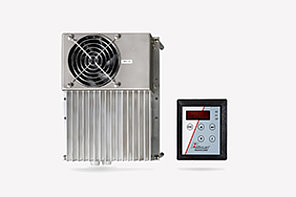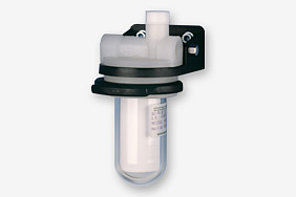As part of the IAPP (International Air Pollution Prevention) efforts to reduce the emissions of CO2 and other pollutants, the international type of maritime shipping is also increasingly regulated. The reason for this is that the fuel for large ocean-going ships is predominantly high sulfur fuel oil (HSFO), which contributes significantly to global air pollution.
To eliminate these sources of pollution, the IMO (International Maritime Organization) began a long time ago to set binding limit values for air pollutants, like those for power plants on land. In addition, some coastal regions in America, Europe and Asia have issued even stricter emission limit values and prohibit ships that do not comply with these limit values from entering their coastal waters and ports. National authorities use so-called sniffers to monitor emissions from the air and / or at stationary points such as bridges and port facilities.
Since January first, in the year of 2020, a limit value of 0.50% applies to SO2 emissons in international waters and alimit value of 0.10% in coastal waters (ECAs = Emission Control Areas). The ECAs include e.g. also North and Baltic Sea.
In order to comply with the new limit values, the regulations provide shipping companies with different options. This includes the fundamental change in the type of fuel, e.g. from HSFO to MGO (Marine Gas Oil) or LNG (Liquid Natural Gas) as well as equipping or retrofitting ships with desulphurization systems, so-called SOx scrubbers.
For the shipping companies, these scrubbers have the advantage that they can continue to burn the HSFO, which is considerably cheaper in relation to MGO or LNG, in the existing drive machines with manageable investment and operating costs.
Similar to the desulphurization systems in the stationary power plant area, the scrubbers work as air washers. In the so-called open-loop process, the alkalinity of the sea water is used to neutralize the sulfur from the engine exhaust gases. The closed-loop and the dry porcess, as well as a combination of the two, are less common. These are closed circuits in which the exhaust gas is desulfurized using chemicals and minerals. In order to comply with the regulations and obtain the required certificates, all systems without exception must be equipped with suitable, also certified emission monitoring systems. These constantly measure compliance with the limit values for SO2 and CO2 and also provide the relevant documentation. This must be proven when entering ECAs and ports. The documentation also includes the proper disposal of the residues resulting from the desulfurization process.
As is common in almost all areas of the maritime shipping for insurance reasons, all components and devices involved in the scrubber system must be certified by an internationally recognized classification society. The acceptance tests are based on the special operating conditions on ships and the climatic ambient conditions. For example, the components must withstand vibrations of up to 4g, depending on the location, and their electromagnetic radiation must not interfere with any on-board systems or sensors.

Gas cooler series TC-Kit+
- Compact design for installation in a gas cooling system
- Effective heat release through external fans and cooling ribs
- Version 24 V, optionally 230 V/115 V
- Protection class IPxxC, with tight installation IP54
- One gas path
- Optimised glass or PVDF heat exchanger model
- Adjustable outlet dew point and alarm thresholds
- Rated cooling power 110 kJ/h
- Dew point stability 0.1 °K MCD400 display module for separate installation
- Used in DNV type-tested conditioning unit
- Compliance with requirements under IMO MARPOL MEPC.259(68) demonstrated
- Low wash-out effects confirmed by DNV confirmed

Fine mesh filter AGF-PV-30
- Bühler Unique quick-release fastener
- Filter housing material: PVDF, glass
- Various filter elements
- Low dead volumes
- Bypass connection for moisture detector
- Used in DNV type-tested conditioning unit
- Compliance with requirements of MARPOL MEPC.259(68) of IMO confirmed
- Special design for use in high-vibration environments

Peristaltic condensate and metering pumps CPdouble
- Built-in and housing version
- FM approval optional
- Separate installation possible
- Various flow rates
- Metering pumps with low flow rates
- Easy to replace hoses
- Various hose materials available for demanding applications
- 115/230 V AC or 24 V DC
- Used in DNV type-tested conditioning unit
- Can be used in a system to maintain the IMO MARPOL MEPC.259(68)
- Special design for use in high-vibration environments

Sample Gas Pump P1.1
- Easy to replace valves Single-piece bellows
- Conveys sample gas with condensate
- Proven pump technology
- Attractive price
- Requires little space
- Housing version IP20
- Optionally with built-in bypass valve
- FM C-US approval (general purpose) optional
- Used in DNV type-tested conditioning unit
- Can be used in a system to maintain the IMO MARPOL MEPC.259(68)
- Special design for use in high vibration environments

Flow Meter SM-6
- Corrosion-resistant materials
- Easy installation
- Designed for air and water
- Special measuring ranges available upon request
- Easy measuring tube replacement
- Option to add limit switch and needle valve
- Cover prevents contact and accidental adjustment of the measuring point
- Used in DNV type-tested conditioning unit
- Special design for use in high-vibration environments


